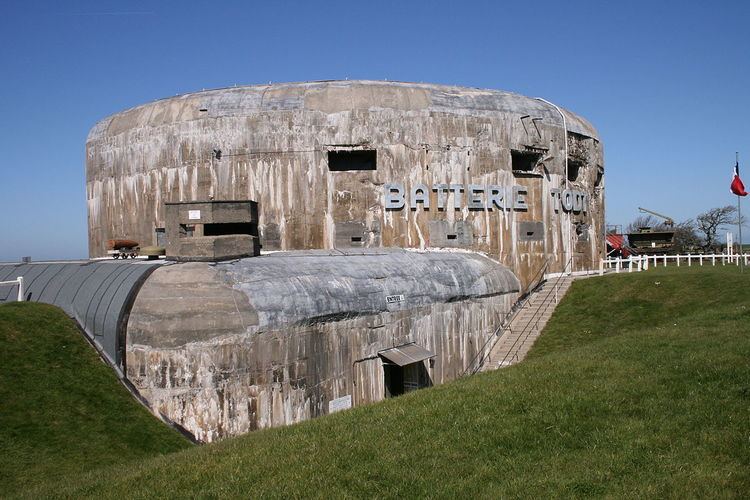In use 1942-44 Year built 1942 Built by Organisation Todt Materials Concrete, Steel | Battles/wars Operation Undergo Phone +33 3 21 32 97 33 Garrison Kriegsmarine | |
 | ||
Open to
the public One casemate is open to the public Condition Four casemates, in varied condition Address Caps et Marais d'Opale Natural Regional Park, Route du Musée, 62179 Hameau de Haringzelle - Audinghen, France Hours Open today · 2–5:30PMSunday2–5:30PMMonday2–5:30PMTuesday2–5:30PMWednesday2–5:30PMThursday2–5:30PMFriday2–5:30PMSaturday2–5:30PMSuggest an edit Similar Cap Gris Nez, Museum of the Atlantic Wall, Blockhaus d'Éperlecques, Fortress of Mimoyecques, Cap Blanc Nez | ||
The Todt Battery is a battery of coastal artillery built by the Germans in World War II, located in the hamlet of Haringzelle, Audinghen, near Cape Gris Nez, Pas de Calais, France. It was one of the most important coastal fortifications of the Atlantic Wall, and consisted of four 380 millimetres (15 in) calibre Krupp guns with a range up to 55.7 kilometres (34.6 mi), capable of reaching the British coast, and each protected by a bunker of reinforced concrete.
Contents
History
The battery fired its first shell on 20 January 1942, although it was only officially opened in February 1942 in the presence of high Kriegsmarine dignitaries. Originally to be called Siegfried Battery, it was renamed in honour of the German engineer Fritz Todt, creator of the Todt Organisation and responsible for the construction of the Atlantic Wall, who died in a plane crash days before the battery's inauguration.
The battery was taken by Anglo-Canadian troops in September 1944, after an intense aerial bombardment, as part of Operation Undergo.
Museum
One of the four casemates now houses a museum about World War II, Musée du Mur de l'Atlantique. The exhibits include military hardware, including, outside, one of two surviving Krupp K5 artillery rail-mounted cannon.
